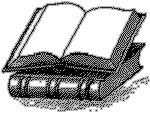

Education
| The
Dumbing Down Of America's Colleges by Phyllis Schlafly
The 1996 Governors Education Summit at Palisades, New York, spent two days discussing "standards" for what students should learn in public schools. Longtime American Federation of Teachers president Al Shanker gave this concept a reality check. He said, when as a teacher he assigned homework to his class, the pupils invariably responded in chorus, "Does it count on our grade?" He pointed out that standards aren't going to make any difference if, no matter what students learn or don't learn, they can still get admitted to nearly all U.S. colleges and universities. The National Association of Scholars (NAS), the nation's leading higher-education reform organization, has just published a devastating 65-page report on the dumbing down of the 50 top undergraduate colleges and universities. The NAS used "U.S. News & World Report's" annual listing of "America's Best Colleges" (including both private and public) and compared the years 1914, 1939, 1964, and 1993. The NAS concludes that students no longer learn the common core of knowledge once taken for granted as essential to a liberal-arts education. The universities have simply purged from the curriculum many of the required courses that formerly taught students the historical, cultural, political and scientific basics of our society. The number of mandatory courses has been dramatically reduced from an average of 9.9 in 1914, to 7.3 in 1939, to 6.9 in 1964, and to 2.5 in 1993. The formerly universal requirement that students take a basic survey course in several important areas has virtually vanished. Universities now offer very few courses that require prerequisites, which means that very few college courses now require any advance knowledge or preparation. In 1914, universities offered an average of only 23 courses per institution that did not require a prerequisite course; in 1964 the figure had risen to 127; today, the number is 582. Only 12 percent of universities now require a thesis or comprehensive examination to get a bachelor's degree. As late as 1964, more than half of universities did. The college year has been shortened by about one-fourth (leaving more time for spring break and other frivolities, but, of course, without any reduction in tuition price or professors' salaries). In 1914, college classes were in session an average of 204 days a year; by 1939 the number had dropped to 195; in 1964, to 191; and today students and teachers are expected to show up in class only 156 days per academic year. Maybe the reason why young people can't write good English is that so few colleges teach writing any more. In 1914, nearly all universities had required courses in English composition; by 1964 the figure was 86 percent; today, it's only 36 percent. Ditto for math. In 1914, 82 percent of the universities had traditional mathematics requirements; by 1964 only 36 percent did; now, only 12 percent do. In 1914, 1939 and 1964, more than 70 percent of the institutions required at least one course in the natural sciences; that figure has now fallen to only 34 percent. Maybe the reason why the taxpayer-financed federal guidelines on the teaching of American history turned out to be such a travesty was that most college graduates haven't studied any history. In 1914, 90 percent of our elite colleges required history; in 1939 and 1964 more than 50 percent did; but now only one of the 50 schools has a required history course. Literature courses were required at 75 percent of the institutions in 1914, and at 50 percent in 1939 and 1964. Today, not one of the "best" institutions has a literature requirement. Meanwhile, the total number of courses offered at undergraduate institutions has increased by a factor of five since 1914, and has doubled since 1964, but that doesn't offer more opportunities to become an educated citizen. The majority of these additional courses are on narrow and idiosyncratic subjects of interest to the professors but almost worthless to the students. Many courses are not college courses at all; they are designed to teach students what they didn't learn in high school. Sometimes these courses are called "remedial," but the institutions prefer euphemisms such as "second tier" and "sub-freshman." Unheard of prior to 1939, today such non-college courses are offered in 70 percent of the elite universities, and most of them award college credit. California state legislators have recently discovered the high cost to the taxpayers of the remedial education courses given at the state universities. Last year, 60 percent of new students needed remedial help. California legislators assert that students have been the victims of consumer fraud perpetrated on them by the high schools that gave them high grades. The legislators want to send the invoice for the cost of the remedial courses to the high schools that deceived their students by giving them a 3.8 or higher grade- point average. The NAS concludes that our best colleges and universities no longer turn out graduates who have even an elementary knowledge of our civilization and its heritage. They do not learn the basic facts of our country's history, political and economic systems, philosophic traditions, and literary and artistic legacies, and the result is that we are in danger of losing the national cohesion of a known and shared American heritage. Eagle Forum - Phyllis Schlafly Column 4/11/96 -- The Dumbing Down Of America's Colleges |

www.tysknews.com
4 May 1999